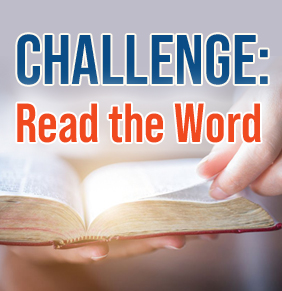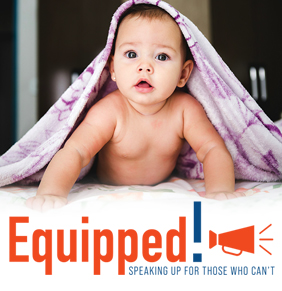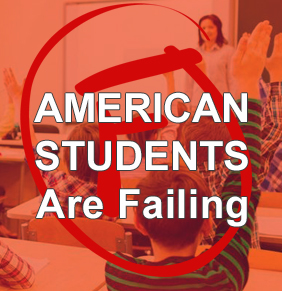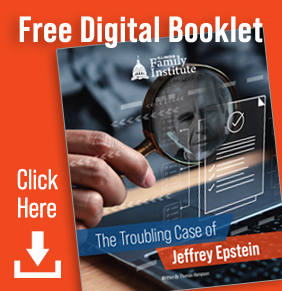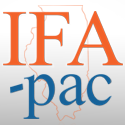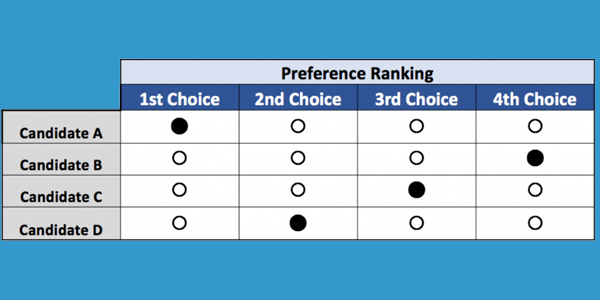
Ranked-Choice Voting: Is It a Good Choice for Illinois?
Written by Jane Ryan Carrell
A September 2019 article in The Atlantic describing a new way of voting for candidates bears the headings “A step toward blowing up the presidential-voting system” and “Maine’s adoption of ranked-choice voting could upend a close race for the White House.”
What is Ranked-Choice Voting, who is adopting it, and should Illinois adopt it? What are the positives and negatives, and how might it affect the 2020 presidential race?
Under Ranked-Choice Voting, sometimes abbreviated here as RCV, the voter lists candidates in order of preference. A ballot might have room for five or more candidates in a particular race, perhaps the presidential race. From The Atlantic article:
“The format works like an instant runoff. If no candidate receives more than 50% of the first-choice votes, the candidate with the least support is eliminated. Whomever that person’s voters picked as their second-choice is added to the tallies, and the process is repeated until one person reaches the majority.”
Ranked-Choice Voting is often referred to as “instant runoff” voting, since it makes runoff elections unnecessary.
WHO DOES RCV?
So, what states are adopting Ranked-Choice Voting? As of 2019, Maine is the only state that has adopted RC for statewide and federal elections. Portland, Maine uses RCV for municipal elections. Four counties in California had adopted it, and three in Colorado. Sarasota County in Florida has adopted RCV, but has not implemented it. A few cities or counties in other states have adopted, if not implemented it, but New York City is the largest population that has adopted RCV, tripling the number of Americans who use it.
PROS AND CONS OF RANKED-CHOICE VOTING
Greg Orman wrote a 2016 favorable article on RCV, saying,
“In a ranked-choice election, the only way to waste your vote is to actually vote against a candidate. As long as the candidate you like least doesn’t reach the 50 percent threshold, they won’t win. So only positive votes matter. …
Ranked-choice voting effectively allows voters to vote their actual preferences instead of having to vote strategically. This would have a meaningful impact on elections and governing. It would empower independent and third party candidates by eliminating the “wasted vote” argument.
One negative of Ranked-Choice Voting, quoted in a Politico article, is the following:
“In cities where ranked choice has been tried, it has sometimes resulted in unorthodox campaign tactics like multiple candidates banding together into alliances with competitors to jockey for second and third place votes.”
In a 2013 article in Governing, Louis Jacobson mentions these negatives for RCV:
“To be sure, the system has also inspired opposition. For starters, it’s more complicated for voters to understand, at least until they get used to it. In addition, some say there may be value in having an actual final round of campaigning between two candidates. That way, voters can see the top two finishers directly battling each other for public support. These drawbacks have come into sharpest relief when second-place or even third-place finishers in the first round ended up winning the election.”
You may wonder what data Mr. Jacobson could draw on, as RCV seems new to us Americans. In fact, Ranked-Choice Voting was first invented in the 1850’s “as a proportional representation system to be used in multi-winner elections.” Jacobson writes,
In the 1870s, it was adapted to the single-winner form. It is sometimes referred to as “instant runoff voting,” “preferential voting,” “proportional representation,” “single transferable vote” and a number of other names.
Cambridge, Massachusetts began using a multi-winner form of RCV in 1841 for City Council and School Board. In Springfield, Illinois RCV has been used since 2011 for local, state and federal election runoffs.
ADOPTED AND REPEALED
It is interesting to note that three U.S. city jurisdictions have adopted and shortly repealed Ranked-Choice Voting since 1974 [6]:
-Ann Arbor, Michigan: Adopted 1974, Repealed 1976 Mayor Single-Winner
-Aspen, Colorado: Adopted 2007, Repealed 2010 Mayor; Two City Council Seats Single-Winner
-Burlington, Vermont: Adopted 2005, Repealed 2010 Mayor Single-Winner
This would seem to indicate that citizens believed that their preferences were not represented by the outcomes of RCV elections.
Articles have been written about what effect RCV might have had on the 2019 Chicago mayoral elections, where, in the initial voting, the two candidates who later faced off, Lori Lightfoot and Toni Preckwinkle, were among 14 candidates for mayor, and received 17% and 16% of the vote, respectively. (HERE and HERE)
The advantage in Ranked-Choice Voting for the election authority is the end of costly runoff elections. Disadvantages include the costs of the extended election process, the need to educate voters, and the loss of instant notification of an election’s winner. It could take two weeks for the winner to be identified, as second- and third-choice candidates are weighed. A cynic could find that Ranked-Choice Voting, with intrinsic delays in the report of results, offers more opportunities to tamper with election results, but who could be cynical about voting in Illinois?
WHAT ABOUT LONG PRIMARY CAMPAIGNS?
The Atlantic article claims,
“[this dilemma is] unique to long primary campaigns. The Kansas primary isn’t until May 2, when the field of candidates will almost surely be smaller than it is now. But the filing deadline for the primary is in February, meaning that, like in other late-voting states, many Democratic contenders who quit the race in the interim will likely still have their name on the ballot. In 2016, Richie told me, 700,000 votes were cast in the Republican and Democratic primaries for candidates who had already withdrawn from the race — a wrinkle already exacerbated by the rise of early voting. If voters are ranking their candidates, it’s more likely that their second or third choice will be counted in that scenario.”
Early voting, which many consider a plague on elections, is a separate issue. Its proponents represent voting weeks before the election as a victory for ballot access. However, it makes observation of voting more problematic and causes many to cast their votes in ignorance of issues outlined closer to the election. Voters will also be casting their votes prior to any “October surprises” that may arise.
Ranked-Choice Voting has no inherent advantage for a particular political party, but turns the conventional wisdom about the effect of third parties on its head. Under Ranked-Choice Voting, the party that is least unified would seem to have the advantage, so long as its separate “legs” go to the trouble of fielding their own independent or third party candidates. If that situation occurs, Ranked-Choice Voting could upend the election of a major party candidate with a slim lead over the candidate of the other major party.
In a recent race where Ranked-Choice Voting was in force — Maine’s 2018 midterm elections — incumbent Republican Congressman Bruce Poliquin won narrowly on the first round. After second- and third-choice preferences were tabulated for two independent candidates, Democrat Jared Golden won election.
IF RANKED-CHOICE VOTING HAD BEEN IN EFFECT WHEN…
While third party candidates have always been considered a threat to major parties (recall the 1992 William J. Clinton–GHW Bush race, with Independent Party candidate Ross Perot drawing 18.9% of the vote), under Ranked-Choice Voting, the political party with the most adherents who split off to support third party candidates would gain the advantage. In the above-mentioned Clinton-Bush race, with Clinton drawing 43% of the vote and Bush drawing 37.4%, Ranked-Choice Voting would likely have given Bush the race, as most of Ross Perot’s followers would likely have listed Bush second on their preferential ballot. Since their concern was the ballooning federal deficit, George Bush Sr. would have had more appeal than Bill Clinton for Perot’s followers.
In the more recent Hillary Clinton–Donald J. Trump race, the third party advantage would have fallen to Trump, as the third party Libertarian vote was 6%, while the Green Party vote was only 2%. Green Party philosophy falls more in line with current Democrat Party philosophies. Its adherents would be expected to list Hillary second on their preferential ballot. Libertarians would likely be more comfortable with the conservative Republican philosophy of “Less Government, More Freedom,” though most Republicans don’t favor legalization of pot!
WILL ILLINOIS CHOOSE RANKED-CHOICE VOTING?
The organization FairVote, whose purpose is promotion of Ranked-Choice Voting, reports that in Illinois, State Senator Laura Murphy (D-Des Plaines) has introduced SB 2267 for Ranked-Choice Voting. While Ranked-Choice Voting may be considered a valid, or even a superior method of electing candidates, people in states like Illinois, where 24 counties were identified as having more registered voters than residents of voting age, may have second thoughts. Judicial Watch reported in January of 2020 that there are at least 2.5 million “extra” registrants on voter rolls across different states. Does the extended counting required by consideration of second-ranked, third-ranked and possibly further-down-ranked candidates offer more opportunity for stealing elections? How will the process be overseen by partisans of all parties?
Illinoisans may want to weigh in with their legislators. But don’t be surprised when your legislator pooh-poohs your concern about adding safeguards against election fraud. After all, that doesn’t happen in Illinois, does it?
Jane Ryan Carrell, a graduate of Loyola of New Orleans and Brown University, has written on various topics including election fraud, right-to-life, and climate change. She is a past president of Winnebago County Right to Life and a former board member of the Illinois Federation for Right to Life. She serves on the board of the Illinois Conservative Union.


